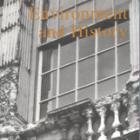Viles, Heather. “ ‘Unswept stone, besmeer’d by sluttish time:’ Air Pollution and Building Stone Decay in Oxford, 1790–1960.” Environment and History 2, no. 3 (Oct., 1996): 359–72. doi:10.3197/096734096779522257. On January 1, 1790 the Oxford canal finally opened with the arrival in Oxford of 200 tons of cheap coal from the Midlands. This event was one important stimulus to the economic transformation of Oxford from a quiet university and market town to a large commercial and industrial centre. The advent of affordable coal in plentiful supply encouraged economic progress, but at the same time brought a largely silent pollution legacy which is still evident today. In this essay, the author argues that the issue of building stone decay induced by air pollution has been a major theme in the recognition of, and reaction to, ‘the air pollution nuisance’ in Oxford. Changing perceptions of the aesthetic appeal of decayed buildings; opposition to industrial and economic progress; increasing scientific understanding of the decay process; and a concern with conservation and preservation of the historic university centre have all been important strands within the history of air pollution here. All rights reserved. © 1996 The White Horse Press
"'Unswept stone, besmeer'd by sluttish time': Air Pollution and Building Stone Decay in Oxford, 1790–1960"
Viles, Heather | from Multimedia Library Collection:
Environment and History (journal)


